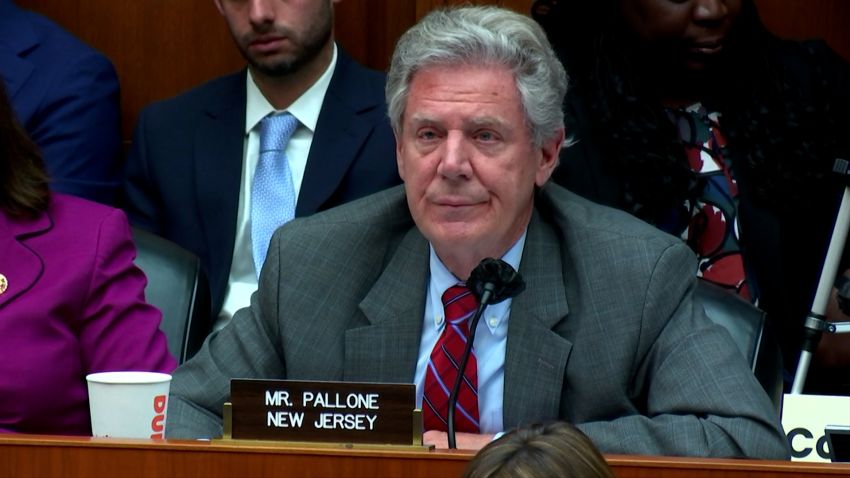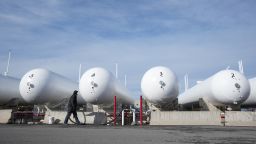Prices at the pump have stopped falling from their recent highs — and some forecasters are warning of another uptick as the summer driving season looms and the war in Ukraine continues.
After a slow-but-steady decline, the national average price for regular gasoline bottomed out at $4.07 a gallon last week, according to AAA. Since then the national average has increased four days in a row, climbing to $4.10 a gallon on Tuesday.
It’s the first increase gas prices since early March, when war-driven turmoil in energy markets hit a crescendo. And it dashes hopes that the national average would drop to $4 a gallon, taking pressure off inflation that is running at the fastest pace in 40 years.
“It isn’t going down anymore,” Andy Lipow, president of consulting firm Lipow Oil, told CNN. “This is terrible news for inflation.”
Up until this week, Lipow had been forecasting a return to $4 gas. He has since abandoned that call because of renewed concerns about Russia’s oil supplies and a pop in gasoline futures, a major driver of the wholesale and retail price.
“We’re just not going down to $4 at this stage,” Lipow said.
However, the outlook is highly uncertain. Oil prices remain volatile and subject to sharp moves, both higher and lower.
After spiking last week, oil fell sharply Tuesday on demand concerns highlighted by continued Covid lockdowns in China and the International Monetary Fund slashing its global growth outlook for 2022.
‘The market is still scary’
The national average for regular gas topped out at a nominal record $4.33 a gallon last month as the war in Ukraine drove fears of major disruptions to supplies from Russia, the world’s largest oil exporter. (Gas prices would need to surpass $5.30 a gallon to surpass their 2008 highs on an inflation-adjusted basis.)
“I would not be laying odds on DraftKings that $4.33 will be the highest price over the next few months. We may go higher,” said Tom Kloza, global head of energy analysis at the Oil Price Information Service. “The market is still scary.”
The retreat in prices at the pump over the past six weeks was driven by a variety of factors, including a tumble in oil prices, China’s Covid lockdowns, recession fears and the unprecedented release of oil from emergency stockpiles by the United States and its allies.
The good news is that federal government analysts still see gas prices going lower.
The Energy Information Administration expects retail gas prices to average $3.84 a gallon during this summer’s driving season. Although that would be well above last summer’s average of $3.06 a gallon, the EIA notes that inflation-adjusted gas prices would still be below the levels of 2014, let alone the spike in 2008 during the onset of the Great Recession.
Russia supply disruptions vs China demand hit
Yet oil prices remain high and have moved higher in the past week, albeit in volatile fashion.
Renewed fears about Europe sanctioning Russian energy sent US oil prices soaring 9% last week to $106.95 a barrel. Crude gained another 1% on Monday to $108.21 a barrel after unrest in Libya knocked the OPEC nation’s largest oilfield offline. Oil tumbled more than 4%, however, on Tuesday to $103.40 a barrel in recent trading.
It’s notable that oil prices remain above $100 a barrel despite the fact that nearly 400 million people in China remain on lockdown, casting a shadow over demand from one of the world’s biggest consumers of energy.
“They have more people in lockdown than we have man, woman and child in the United States and Canada,” said Kloza.
That’s not to mention the staggering 180 million barrels of oil the Biden administration pledged to release from the Strategic Petroleum Reserve at the end of March. Moreover, the International Energy Agency said it would release another roughly 60 million barrels of oil and petroleum products.
“It shows you the seriousness of the problem of coming up with alternatives to Russian oil. They’re simply not there,” said Lipow.
OPEC can’t replace Russia
Last week, OPEC slashed its forecast for Russian oil production in 2022 by 530,000 barrels due to the war in Ukraine and penalties imposed on Moscow. OPEC upgraded its projection for US output this year, but by only 260,000 barrels per day.
Alarm bells in the energy market sounded after the leader of OPEC warned European Union officials last week that current and future sanctions and other voluntary actions against Russia could cause the loss of 7 million barrels per day of Russian oil, Reuters reported.
“Considering the current demand outlook, it would be nearly impossible to replace a loss in volumes of this magnitude,” OPEC Secretary General Mohammad Barkindo said, according to a copy of his speech seen by Reuters.
Kloza, the OPIS analyst, expects the Russia issue to continue to loom over energy markets.
“As long as it looks as though European countries are heading towards some further restrictions,” Kloza said, “it’s difficult for the market to drop for more than one or two days.”


























